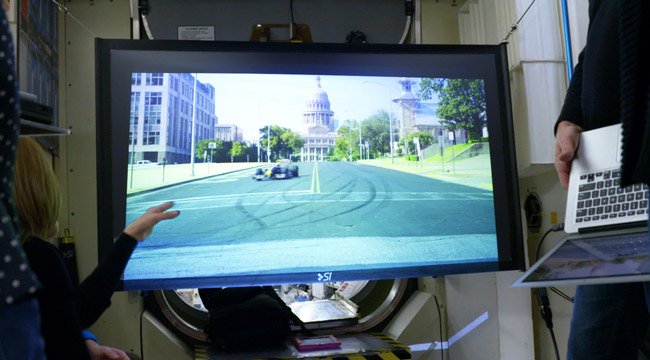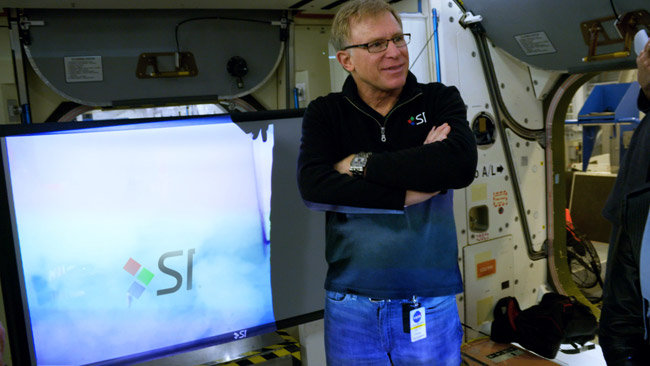The International Space Station (ISS) is about to have a better home theater than most of us. They have so many other cool gadgets, are you really that surprised? However, to bring a big screen into space, the National Aeronautics and Space Administration (NASA) needed a little help from Screen Innovations.
Last week, the rocket SpaceX 6 launched from Cape Canaveral, Florida, carrying the company's new ISS ViewScreen. This portable, 65-inch ambient-light-rejecting, zero-gravity screen was designed specifically for use in space aboard the ISS. In other words, you can't have one.
However, it's great that NASA can. This screen will replace all of the 13-inch, tablet-sized displays that crew members have been using to communicate with Mission Control. Having that larger screen will create a better overall viewing experience for training and simulated operations. Of course, crew members should also appreciate having that enhanced image during video chats with family members.

According to Screen Innovations, it took a total of eight months to create something that could overcome the various challenges of the ISS, including the brightly-lit interior. And since space is limited, a permanent installation was not an option. That could be tough, given the whole zero gravity thing. However, Screen Innovations was up for the challenge.
"Working with NASA is a dream come true! As a company, SI is a fun-loving group of innovative, dedicated professionals who continue to push the envelope every day," said Ryan Gustafson, chief designer, president and CEO of Screen Innovations. "Since its founding in 1958, NASA has been devoted to innovation and to pioneering the age of space travel and exploration. It's safe to say that SI has once again gone where no other screen company has gone before."
When stored, the ISS ViewScreen is roughly 3 feet long and 2.5 inches in diameter. It also features Screen Innovations' ambient-light-rejecting Slate screen material.
"Space -- it's the ultimate environment," Gustafson added. "If we can put a screen there, we can put a screen anywhere on Earth."

Fore More Information: